Photographer Philippe Glade captures the ephemeral architecture of Burning Man
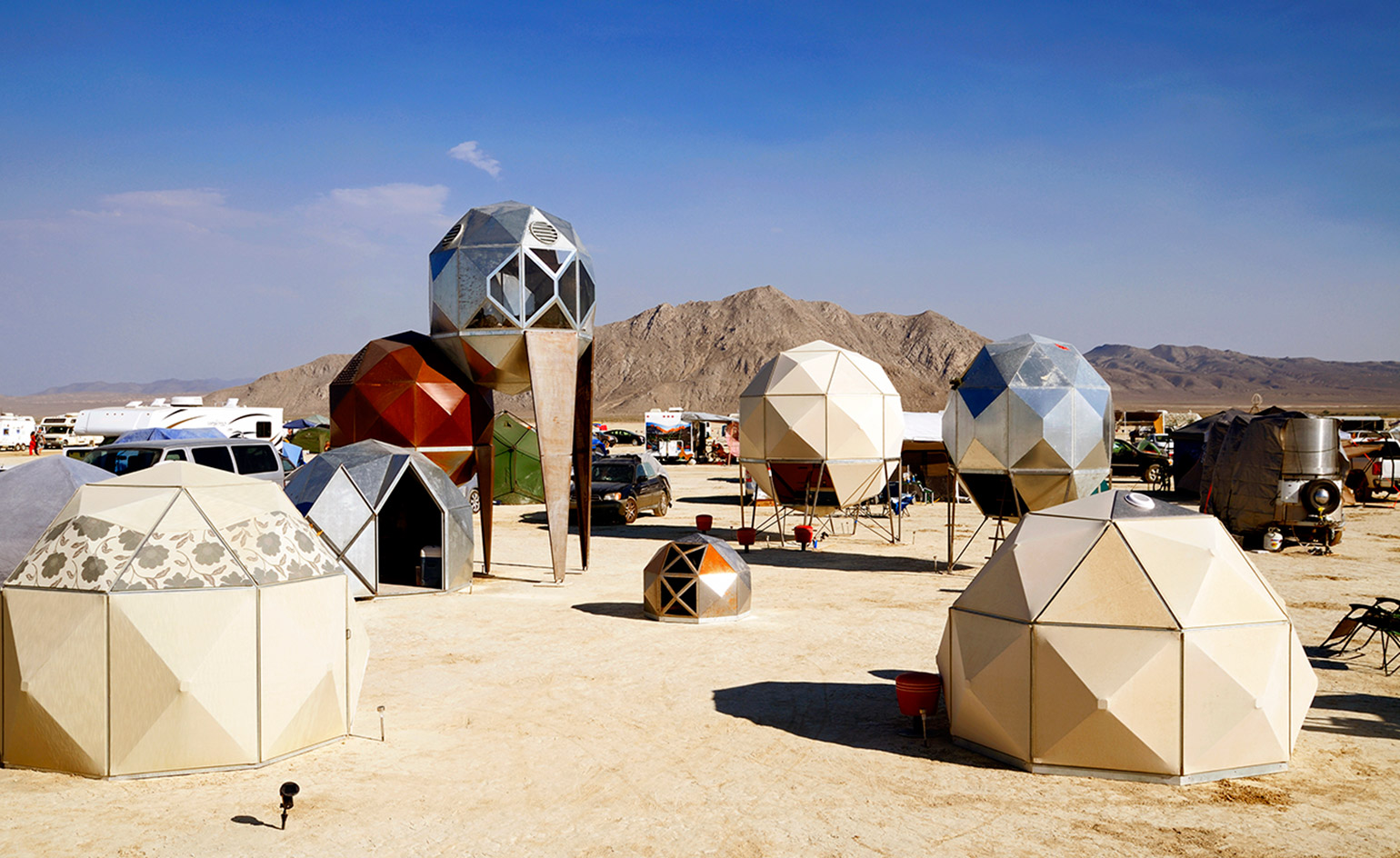
With winds of more than 40 mph, a scorching, unrelenting sun, and freezing nocturnal temperatures, the desert is one of the most challenging conditions to build in. Yet despite the gruelling conditions, the desert has seen some of the most innovative and compelling designs — and nowhere has produced so many ideas for alternative desert survival as Nevada’s Burning Man festival.
Philippe Glade’s love affair with the desert began with an unconventional adventure 17 years ago. ‘In 1990, as a dare with friends, I was in a convoy of Peugeot 504's that crossed the Sahara from the north of France, selling the cars in Niger — where at the time there was a big demand for these sturdy cars.’ A few years and a few similarly dusty road trips in Africa and India, usually accompanied by a Brian Eno soundtrack, the photographer wound up in California.
Struck by an image on a flyer he had seen in San Francisco advertising a little known festival called Burning Man, the familiar feeling of adventure came flooding back. ‘48 hours later with a rental I was driving solo, again, on the long stretch of road 447 going up north to Nevada to a place I didn't know anything about.’ Glade recalls.
‘After 7 hours a sign on the road invited you to drive on a vast expense of dried mud. Coming from nowhere, a “greeter”, covered with dust, asked for my ticket ($35 at the time) and gave me the directions: drive straight 10 miles and then make a 90 degree turn, and drive 4 miles and you will find the place.’
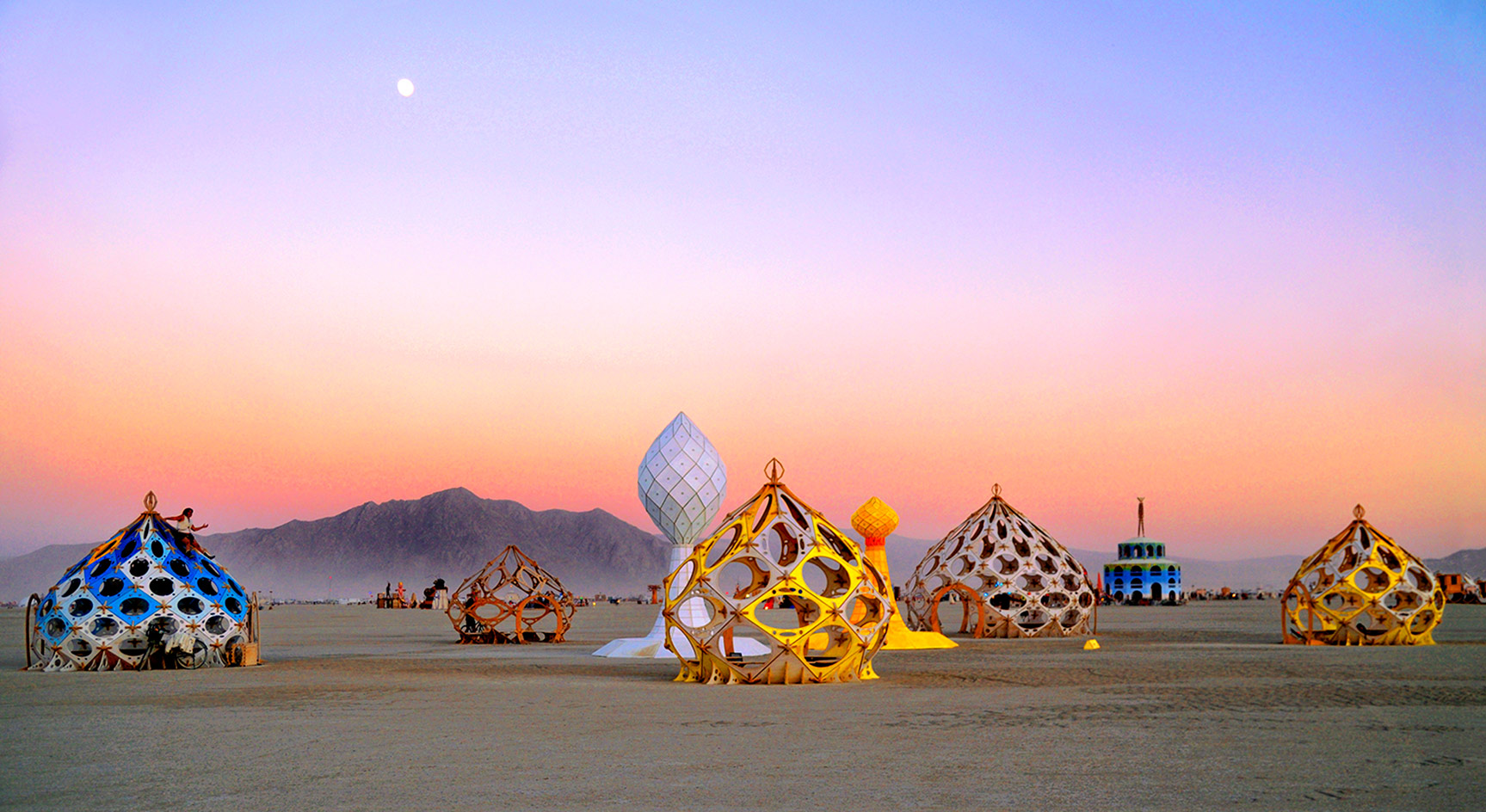
Zonotopia and the three trees, designed by Rob Bell, and photographed by Philippe Glade
It was 1996 and Glade had reached Burning Man in Black Rock City, Nevada, the urban utopia constructed temporarily in the middle of the desert. First held in 1986, Burning Man has its roots in a bonfire ritual organised by a group of friends in San Francisco and is known today as a radical annual gathering of experimental self-expression, selflessness and radical thinking — demonstrated in the art and architecture participants build there every year, with a strict policy that no trace must be left after the event.
‘It was three days of bewilderment, “only in America”, crazy installations and behaviours. Glade says of his first Burning Man experience. ‘Back in one piece, covered in dust, and with 10 rolls of film, I was already planning for next year. I was hooked. Still am.’
Glade has visited Burning Man every year since — but rather than capturing the human happenings at the festival, by now well-documented by the press, (half-naked, half-costumed bodies staggering across the barren landscape) Glade decided to focus his lens on the camps themselves: ‘the structures, the urban planning the streets, how people deal with extremely harsh living conditions while leaving no trace at the end.’
Glade has now compiled his ongoing photographic document of Black Rock City’s vernacular architecture into a book — The New Ephemeral Architecture of Burning Man, published by Real Paper Books.
‘Every image in the book has a function, it illustrates a technic, a particular design, there is no filler, no gratuitous picture; I tried in the limit of the subject to show as much as possible of the city I belong to.’

Aerial view of the Playa
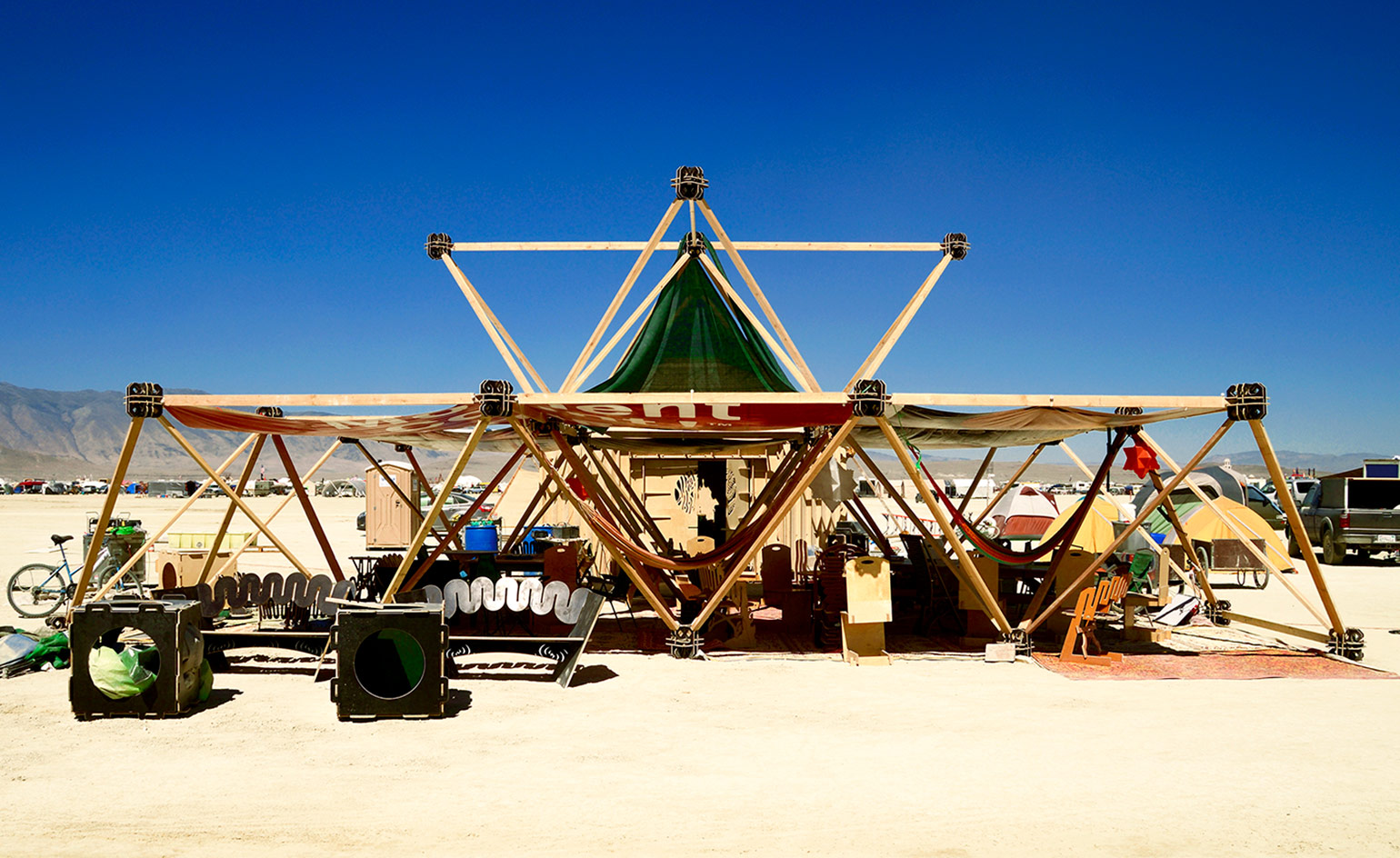
The Gregg Fleishman Camp
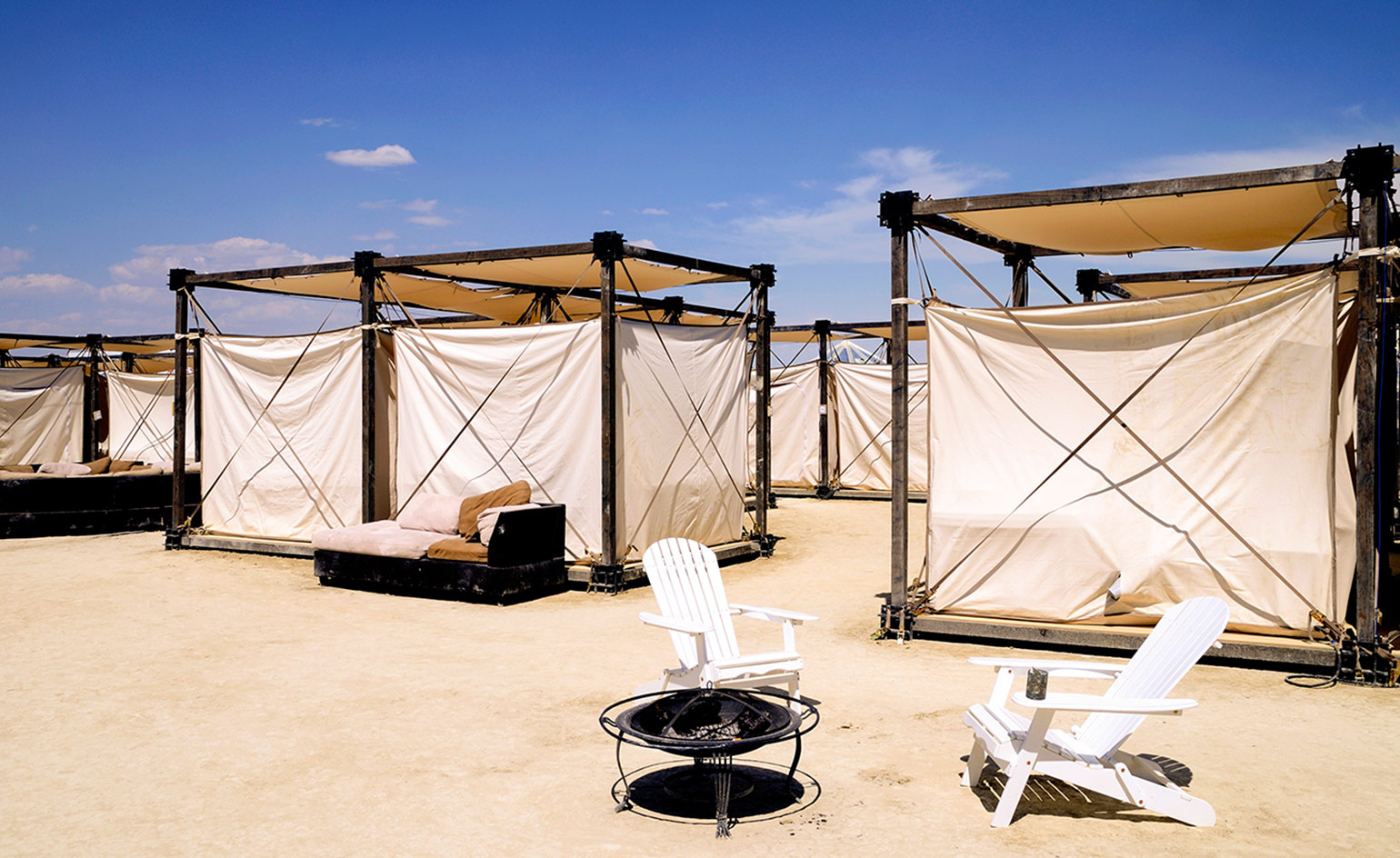
The 'Caravan cycle' settlement
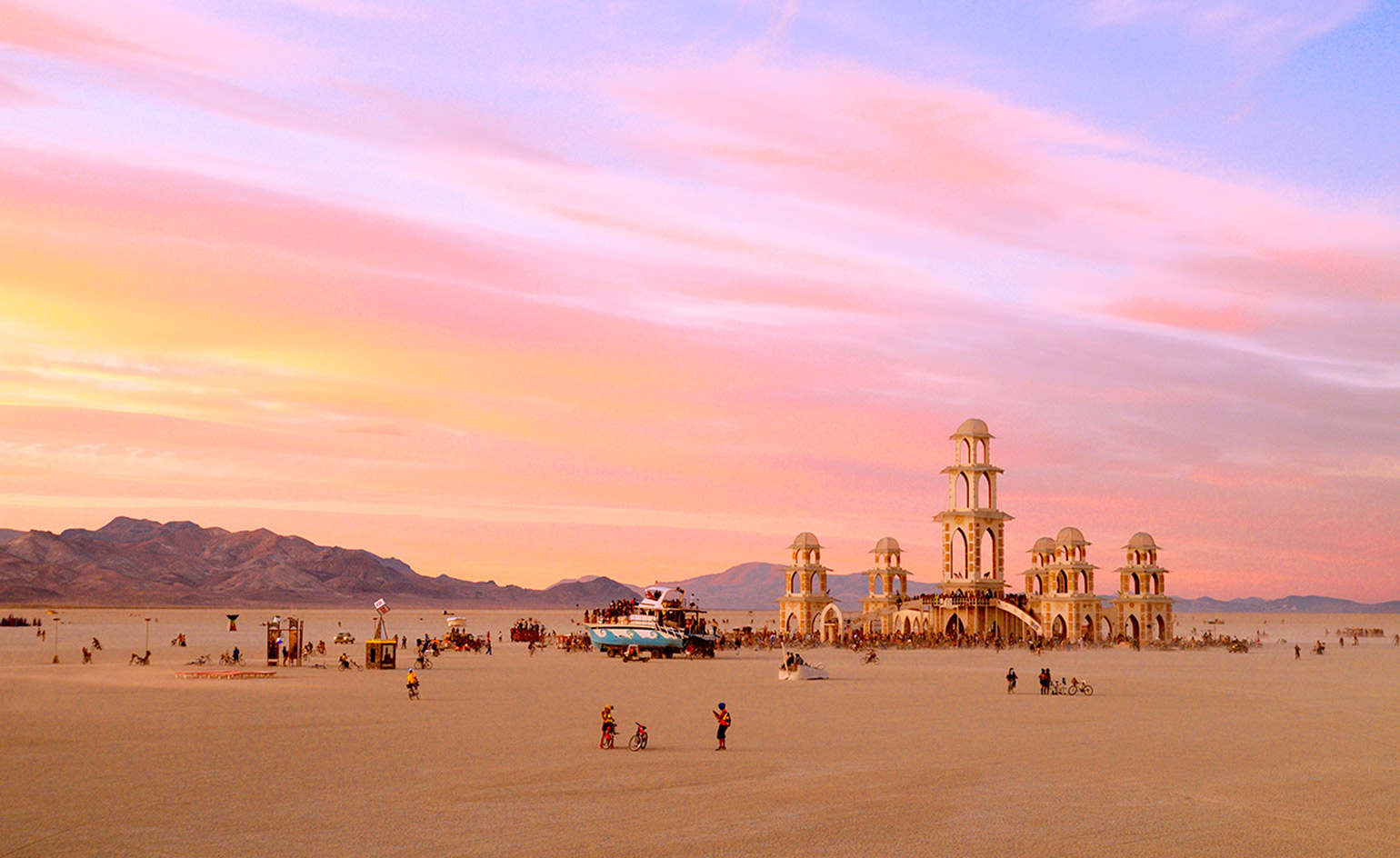
The Temple at Burning Man at sunset

The 'Stretch' tent pitched up in the Nevada desert
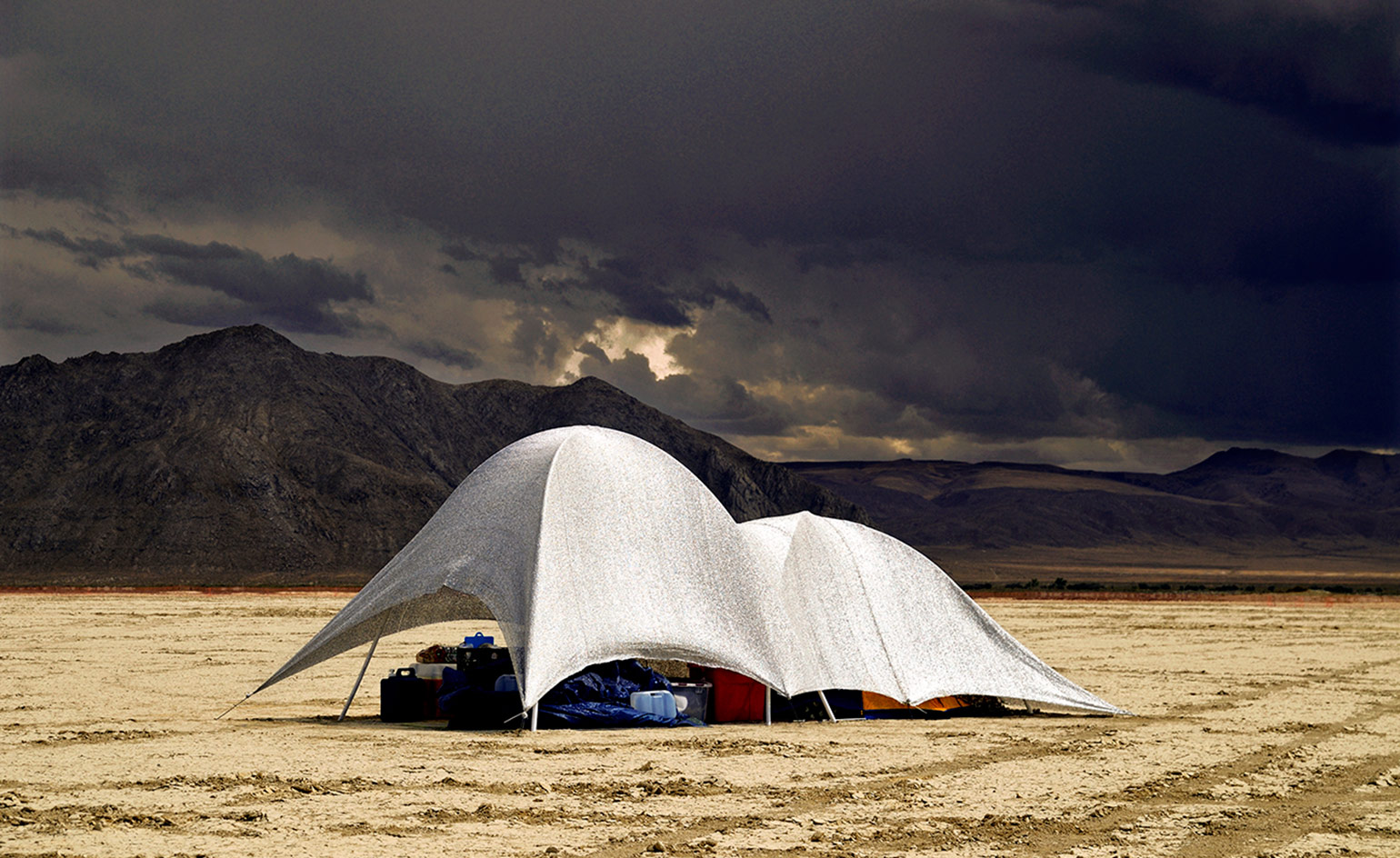
Aluminet tent at Burning Man festival in Nevada
INFORMATION
Black Rock City, NV The New Ephemeral Architecture of Burning Man, $34, published by Real Paper Books
Wallpaper* Newsletter
Receive our daily digest of inspiration, escapism and design stories from around the world direct to your inbox.
Charlotte Jansen is a journalist and the author of two books on photography, Girl on Girl (2017) and Photography Now (2021). She is commissioning editor at Elephant magazine and has written on contemporary art and culture for The Guardian, the Financial Times, ELLE, the British Journal of Photography, Frieze and Artsy. Jansen is also presenter of Dior Talks podcast series, The Female Gaze.
-
 Marylebone restaurant Nina turns up the volume on Italian dining
Marylebone restaurant Nina turns up the volume on Italian diningAt Nina, don’t expect a view of the Amalfi Coast. Do expect pasta, leopard print and industrial chic
By Sofia de la Cruz
-
 Tour the wonderful homes of ‘Casa Mexicana’, an ode to residential architecture in Mexico
Tour the wonderful homes of ‘Casa Mexicana’, an ode to residential architecture in Mexico‘Casa Mexicana’ is a new book celebrating the country’s residential architecture, highlighting its influence across the world
By Ellie Stathaki
-
 Jonathan Anderson is heading to Dior Men
Jonathan Anderson is heading to Dior MenAfter months of speculation, it has been confirmed this morning that Jonathan Anderson, who left Loewe earlier this year, is the successor to Kim Jones at Dior Men
By Jack Moss
-
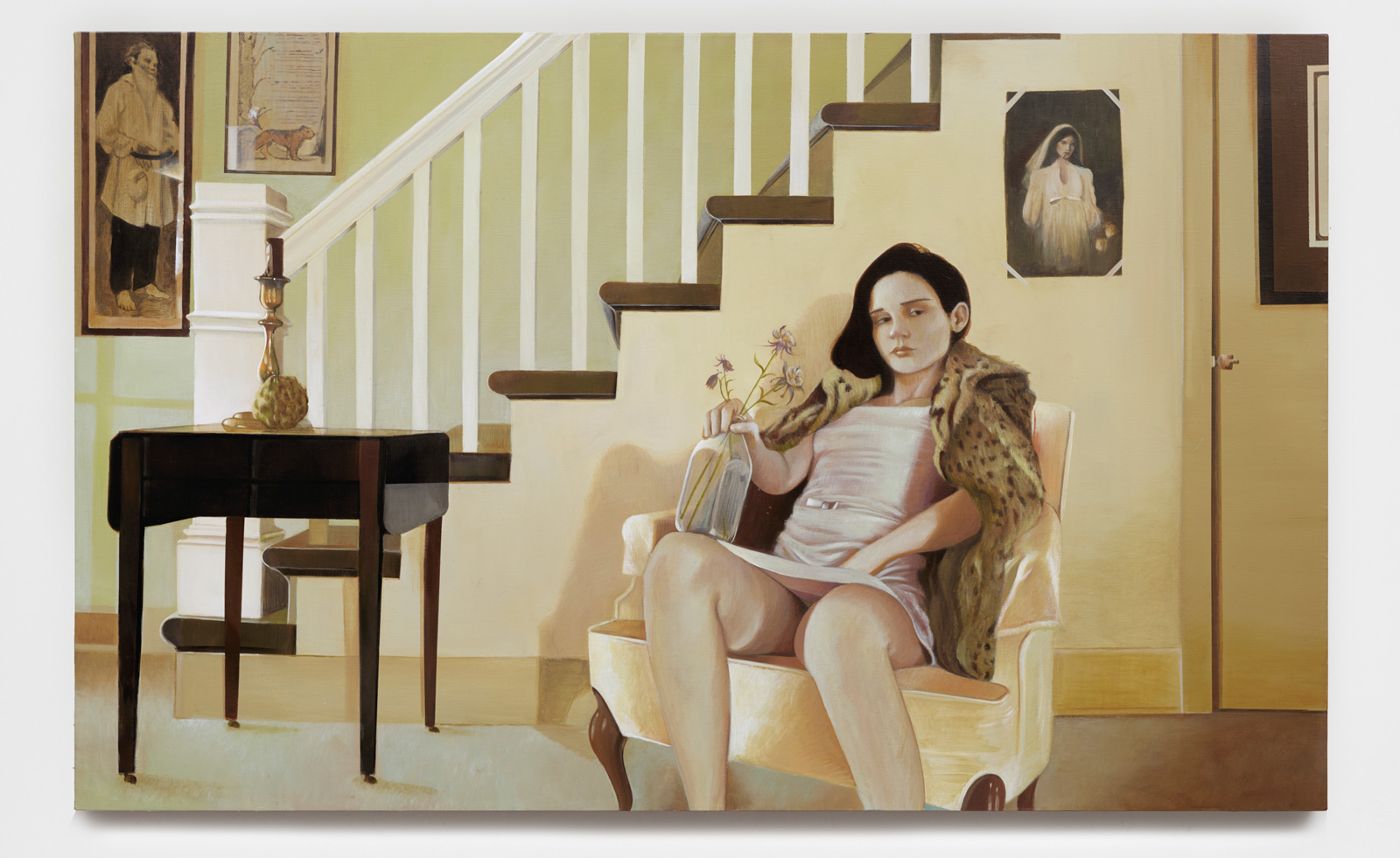 Leonard Baby's paintings reflect on his fundamentalist upbringing, a decade after he left the church
Leonard Baby's paintings reflect on his fundamentalist upbringing, a decade after he left the churchThe American artist considers depression and the suppressed queerness of his childhood in a series of intensely personal paintings, on show at Half Gallery, New York
By Orla Brennan
-
 Desert X 2025 review: a new American dream grows in the Coachella Valley
Desert X 2025 review: a new American dream grows in the Coachella ValleyWill Jennings reports from the epic California art festival. Here are the highlights
By Will Jennings
-
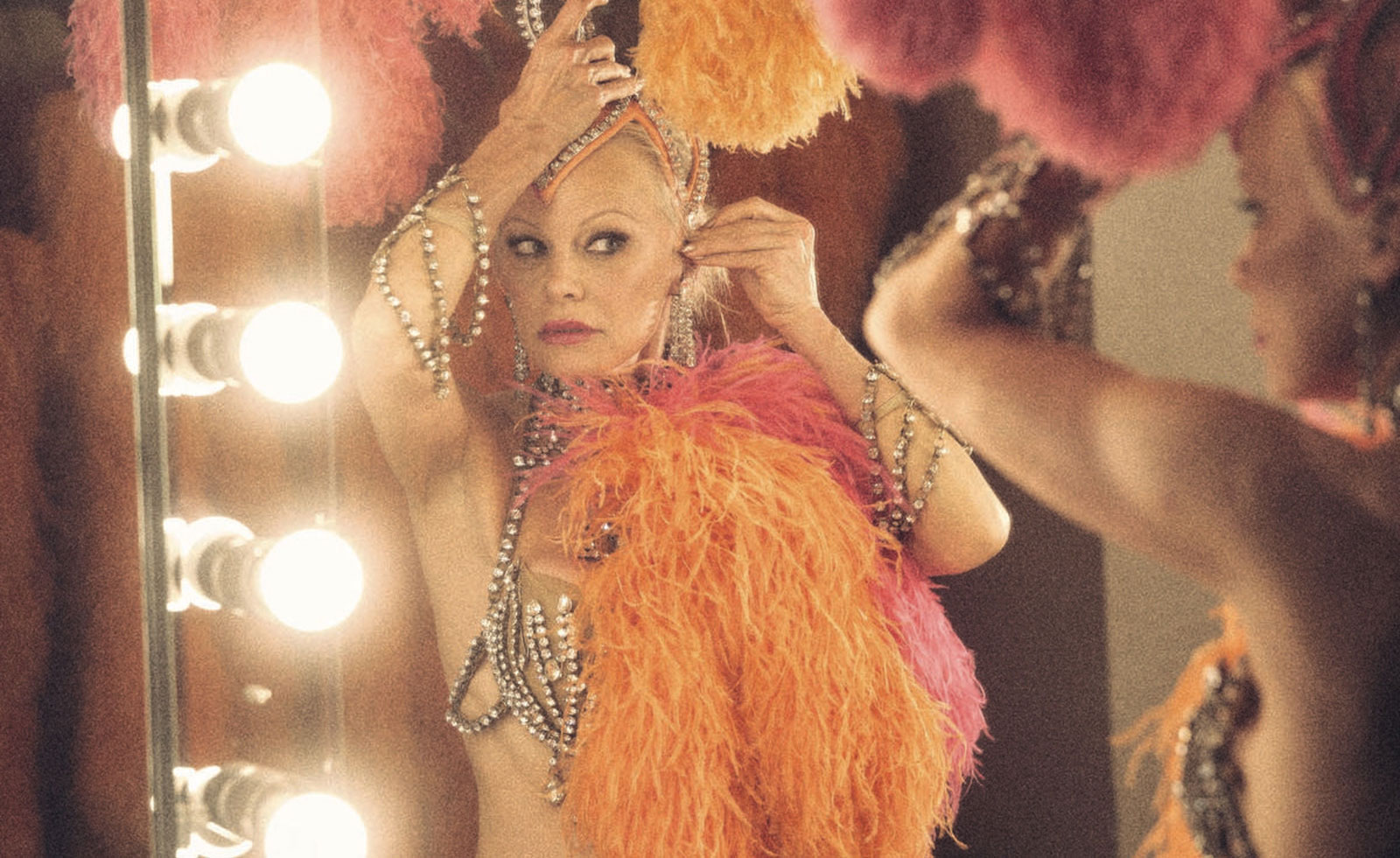 In ‘The Last Showgirl’, nostalgia is a drug like any other
In ‘The Last Showgirl’, nostalgia is a drug like any otherGia Coppola takes us to Las Vegas after the party has ended in new film starring Pamela Anderson, The Last Showgirl
By Billie Walker
-
 ‘American Photography’: centuries-spanning show reveals timely truths
‘American Photography’: centuries-spanning show reveals timely truthsAt the Rijksmuseum in Amsterdam, Europe’s first major survey of American photography reveals the contradictions and complexities that have long defined this world superpower
By Daisy Woodward
-
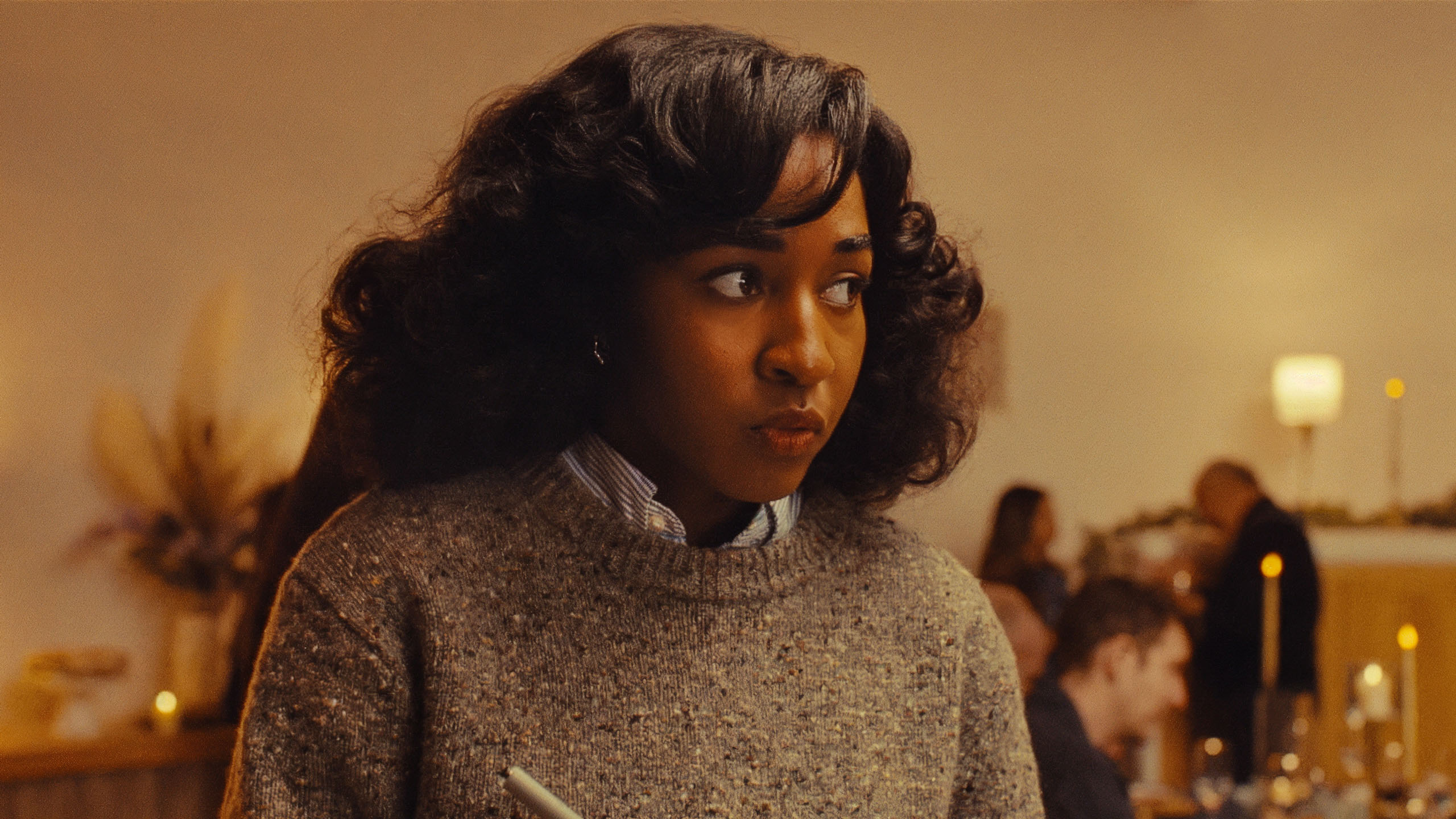 Sundance Film Festival 2025: The films we can't wait to watch
Sundance Film Festival 2025: The films we can't wait to watchSundance Film Festival, which runs 23 January - 2 February, has long been considered a hub of cinematic innovation. These are the ones to watch from this year’s premieres
By Stefania Sarrubba
-
 What is RedNote? Inside the social media app drawing American users ahead of the US TikTok ban
What is RedNote? Inside the social media app drawing American users ahead of the US TikTok banDownloads of the Chinese-owned platform have spiked as US users look for an alternative to TikTok, which faces a ban on national security grounds. What is Rednote, and what are the implications of its ascent?
By Anna Solomon
-
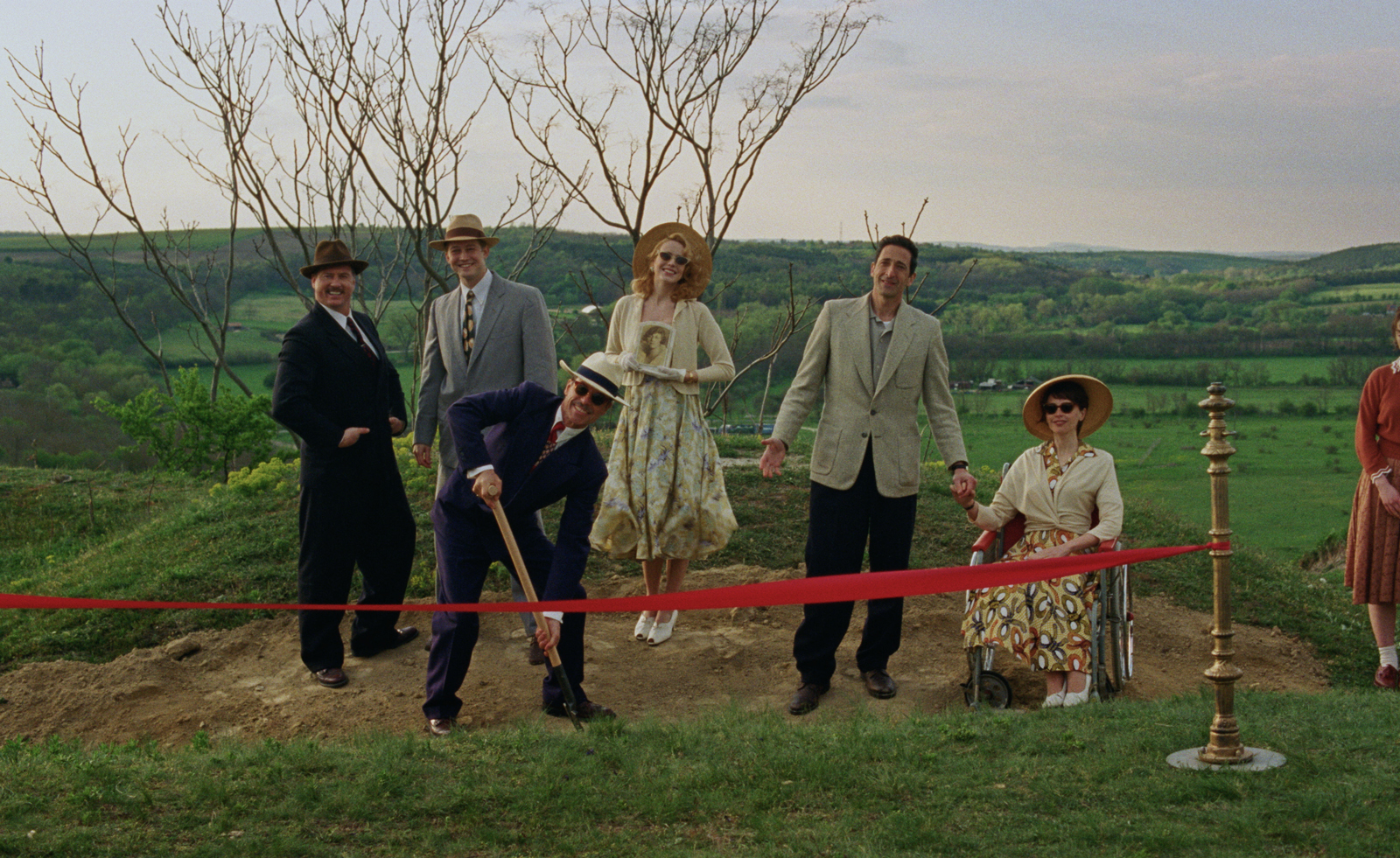 Architecture and the new world: The Brutalist reframes the American dream
Architecture and the new world: The Brutalist reframes the American dreamBrady Corbet’s third feature film, The Brutalist, demonstrates how violence is a building block for ideology
By Billie Walker
-
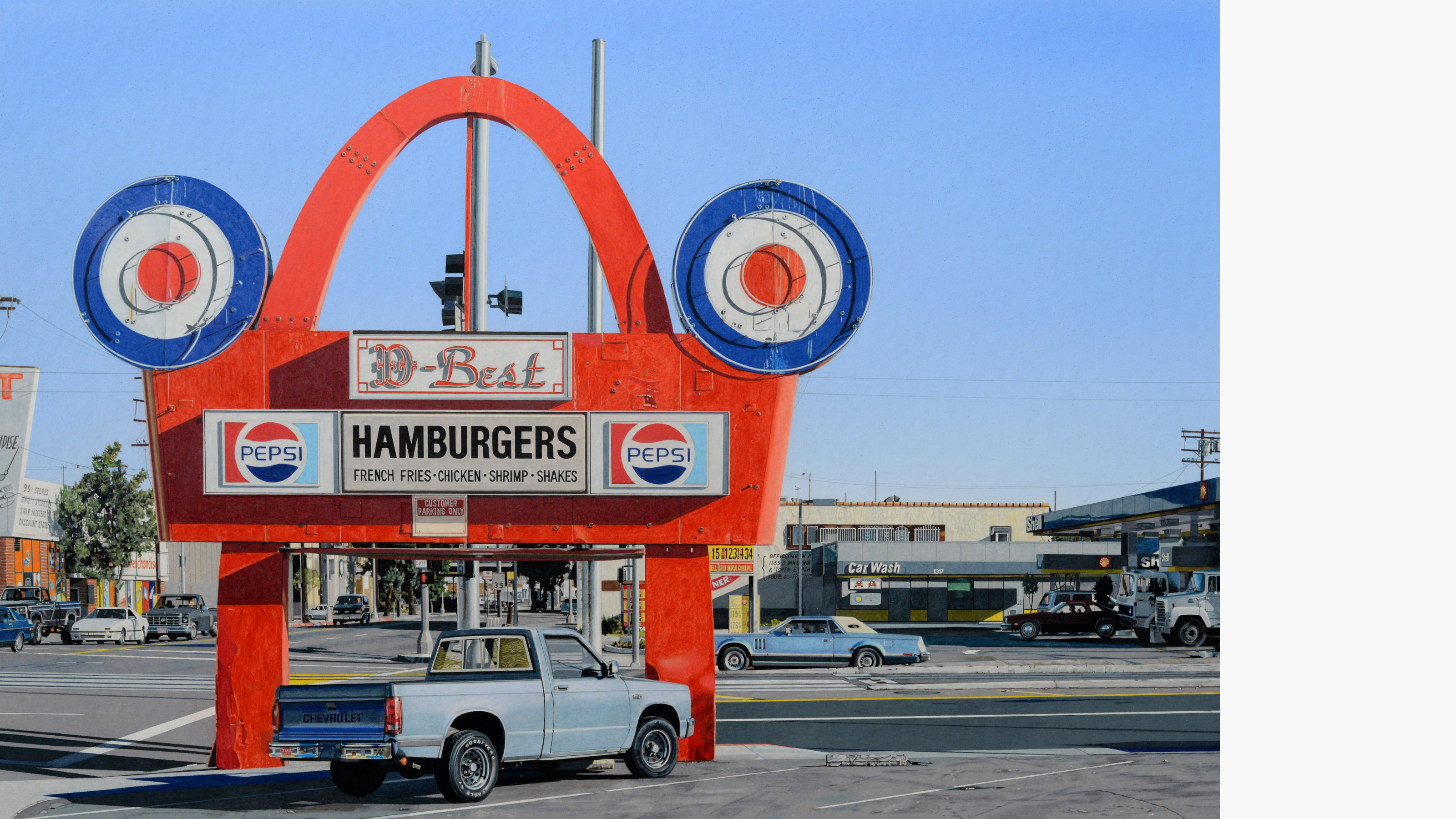 ‘Gas Tank City’, a new monograph by Andrew Holmes, is a photorealist eye on the American West
‘Gas Tank City’, a new monograph by Andrew Holmes, is a photorealist eye on the American West‘Gas Tank City’ chronicles the artist’s journey across truck-stop America, creating meticulous drawings of fleeting moments
By Jonathan Bell